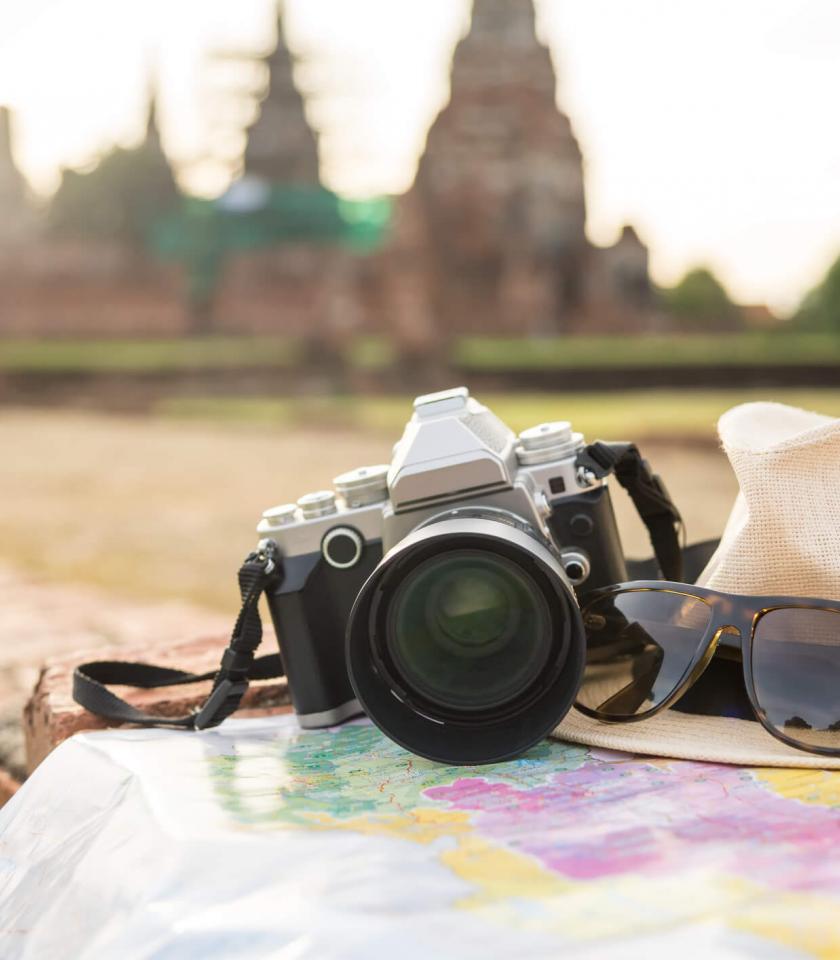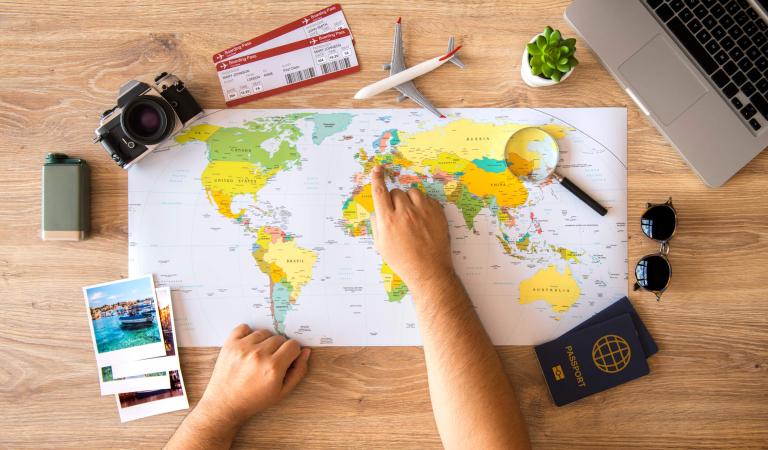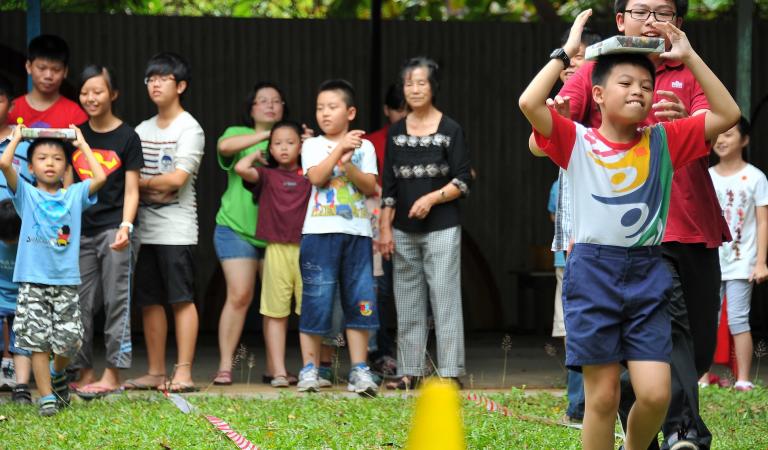Whether you’re an aspiring photographer or an Instagram addict, TEFL is an excellent way to fuel your photography habit, both creatively and financially.
Photography has always been a hobby of mine, but it wasn’t until I gained my TEFL qualification and moved abroad to teach English that taking pictures really became a full-blown passion. When you’re an EFL teacher living in a foreign land, you’re exposed to a higher level of novelty than usual; everything is new and exciting, from the food that you eat, to the landscapes you see, to the people you meet. Ordinarily mundane activities, such as your commute to work or a trip to the supermarket, suddenly become an adventure. And if you’re into taking pictures, this sense of novelty serves as a constant source of creative inspiration.
If you think about it, teaching, travelling and photography actually have something in common, in that all three activities force you to become more connected with the present. And in today’s fast-paced world, feeling more present and engaged in life is something we’re all striving for, right? While some people might argue that looking at life through a lens puts a distance between a photographer and their subject, I find that taking pictures is one of the few things that really snaps me out of autopilot, focusing my mind and opening my eyes to what’s right in front of me.
Travel has the same effect: when you're outside of your comfort zone, you’re forced to pay attention to your surroundings. Being unsure of exactly where you are or how you're going to get to your next destination can be nerve-wracking, but it’s also exhilarating. Teaching, similarly, requires you to think on your feet and maintain a constant awareness of what’s happening in your classroom. You need to be alert, flexible, open-minded, and creative. One of the great things about EFL teaching is that you’re interacting with your students constantly, and as such you become much more immersed in the culture of your host country than if you were just passing through. I find photography to have the same effect, outside of the classroom.
I bought my first ‘proper’ digital camera a few months into my very first TEFL job. I was teaching in Seoul, South Korea, and managing to save around half of my pay cheque every month. I’d only recently graduated from university, so having a disposable income to play with was a new and slightly daunting experience. I decided to be sensible and save as much money as I could; this way I’d be able to start paying off my student debts, and hopefully do some travelling at the end of my teaching contract as well.
Before all of this grown-up stuff, however, I really wanted to buy a decent camera. After countless rounds of mental ping pong over the pros and cons of such extravagant spending (once a frugal student, always a frugal student), I justified this treat to myself by thinking of it as A) a way to develop a skill (and thus become a more interesting person), and B) a means of documenting my time abroad (thus proving to myself and the world that I’d become a more interesting person).
I spent hours online researching cameras and trying to decide which one was best for me. I wanted something with the image quality of a DSLR, but with a less heavy and cumbersome body. I’ve always loved street photography, and I hoped to remain as inconspicuous as possible while snapping impromptu shots of my new surroundings. Eventually, after more perusing of tech websites than I’d wish upon my greatest enemy, I found what I was looking for: a mirrorless camera that was small and light enough to carry around with me wherever I went, while also having the same functions as a DSLR. It had a flip-up display screen, so I could hold the camera at waist level to get those sneaky street shots, Vivian Maier style. Decision made, I grabbed my new Korean bank card (which was pink by the way), threw caution to the wind, and splurged.
With my shiny new camera in hand, it was time to start taking photos. I taught Monday to Friday, 9am to 6pm, and every day after work I’d walk home to my typically Korean micro apartment. The walk took about 45 minutes, but it was one of my favourite times of the day. With the calls of “teacher, teacher” still ringing in my ears (most of my students during that first year ranged from four to 10 years of age), I could unwind, stretch my legs and take in the strange and exciting new world around me.
My route home went straight through a local market, which sold everything from fruit and vegetables to fresh fish, exotic spices, and local delicacies, including Korea’s national dish, kimchi. Each day, I’d walk past mountains of watermelons and huge bags of chili and garlic. With the noise of the vendors shouting loudly over one another to advertise their wares, and the acidic, ever-present smell of kimchi filling the air, it was an attack on all the senses.
I lived on the outskirts of Seoul, far from the glitz and glamour of the famous Gangnam, so my commute was what you’d call “off the beaten track”. As a foreigner, I attracted a fair amount of attention during my evening strolls. The stall-holders were very friendly, but they were overtly aware of me, and I of them. This was the last thing I wanted; I’d hoped to pass through like a thief in the night, silently snapping shots of the locals as they unknowingly went about their day-to-day lives.
To begin with, I was too intimidated to take any pictures at all. I must have walked through that market half a dozen times with my camera slung idly around my neck before I finally plucked up the courage to hit the shutter. Even then, I’d hurriedly take as many photos as possible in the hope that a few would turn out well and no one would notice my infringement on their privacy. I soon realised, however, that nobody cared that I was taking their picture. In fact, many of the people I met during my walks seemed happy for me to do it.
I specifically remember stopping to watch a woman who was sat on the ground snipping and sorting spring onions. Her hands worked away industriously while she chatted and laughed with the woman working next to her. She had a little girl swaddled to her back, a toddler no older than two, who made eye contact with me. Without thinking, I quickly snapped a picture, only to feel instantly self-conscious and a little ashamed. How invasive it must have seemed to this woman to have a “waygook” (Korean slang for “foreigner”) take her picture while she worked.
Yet, when the woman noticed me, she merely smiled before proudly turning her body so that the child was more visible to me. As she made a gesture of encouragement, I tentatively lifted my camera and took another picture. I said thank you in Korean (“kam-sam-ni-da”) and showed her the pictures on my camera’s LCD screen. She didn’t speak any English, nor I Korean, but it really felt as though we’d connected. After that, whenever I walked through the market, I’d always wave when I passed the woman with the baby, and she’d smile and wave back.
My year in Korea went on to be filled with moments like these; moments of connecting with people and places, of feeling anxious and unsure, followed by a sense of clarity, happiness and even elation. Some of these moments came about through photography, others through teaching, travel and adventure. The photos that I took at the market are far from perfect; a lot of them are out of focus, or the exposure is all off. I was still getting to grips with my camera, and I was in too much of a hurry to capture everything around me to really stop and think much about things like aperture or shutter speed.
Despite this however, they’re some of my favourite pictures. Looking at them now brings back so many memories, not only of the sights, smells and sounds of the market, but of a very special time in my life when I stepped out into the world and learned how to be present.






